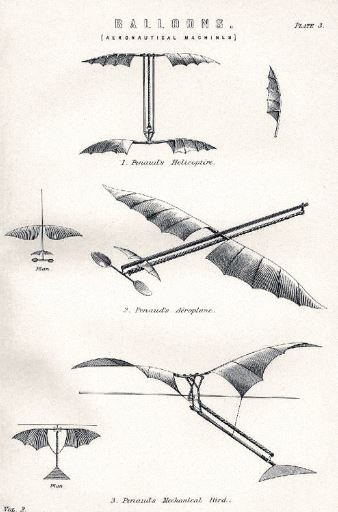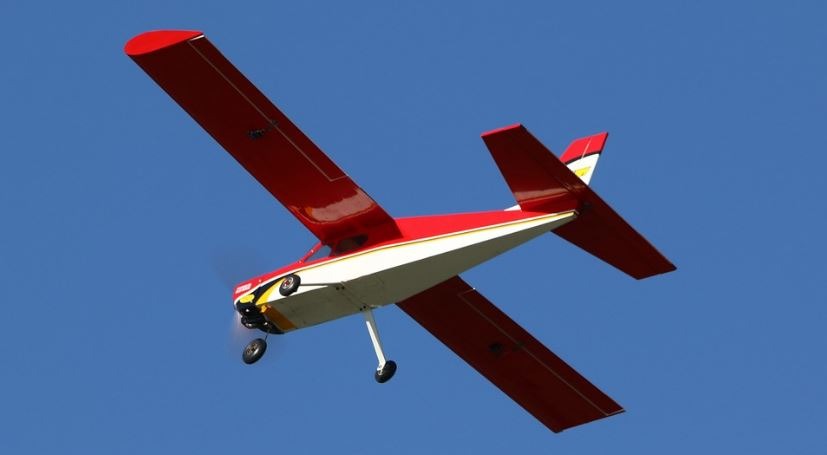In recent years, RC planes have become quite popular, as the ability to operate them brings a great deal of joy and excitement to many people. RC aircraft were once considered children’s toys, but have since evolved into devices that can be customized, enhanced, and flown by adults. There are already a large number of adult-only RC aviation competitions in different countries around the world.
Even though RC planes are ubiquitous today, there are still many people who do not know where these radio-controlled devices originated. This concise history of radio-controlled airplanes will help you understand the origins of these toys or devices.
Before the Creation of RC Planes
In 1898, the very first aircraft model was unearthed during an Egyptian excavation. Historians found a model airplane from around 200 B.C. when they were digging in the Saqqara burial sites. This model plane is 6 inches long and has wings and what is now called a plane’s fuselage. It’s difficult to fathom that people in the past were even considering air travel. This model aircraft confirms that the Egyptians were engineers beyond the pyramids and ancient monuments, confirming their reputation as one of the most advanced ancient civilizations in history.
Archytas II was a philosopher, statesman, strategist, mathematician, and astronomer in ancient Greece. The last two skills he possessed — mathematician and astronomer — likely “propelled” his desire for flight and led to the construction of his first model airplane. Archytas constructed “the pigeon,” as he referred to it, which is documented to have flown approximately 200 meters, or 219 yards. The model aircraft of Archytas had the aerodynamic design of a bird and was powered by steam.
Leonardo da Vinci was not limited to painting and sculpture. Additionally, Da Vinci was a renowned scientist, mathematician, architect, and inventor. Da Vinci also imagined flight and frequently recorded his visions in journals. Da Vinci drew one of the earliest sketches of what we now refer to as a helicopter. It was dubbed the “Aerial Screw,” and modern engineers marvel at how similar this da Vinci design is to a modern helicopter.
The Planophere
Alphonse Penaud is credited with the first successful flight of a model aircraft when he flew his rubber-powered Planophore model 131 feet in 11 seconds in the Tuileries Garden in Paris in 1871.The name Planophore is derived from the Greek words Plano, which means mobile, and Phore, which means carrier. The model was a miniature monoplane measuring 45 cm (18 inches) in wingspan, 50 cm (20 inches) in length, and 15 grams (0.53 ounces) in weight. The aircraft, which had a horizontal stabilizer and a fixed vertical rudder, was propelled by twisted rubber strands that operated a two-bladed propeller. The aircraft was also equipped with a vertical rudder that was fixed. In 11 seconds, the small aircraft traveled approximately 40 meters (130 feet) and ascended through two circles before gliding back to a landing near its point of departure.
The Planophere was the first public flight of a model aircraft that was stable. Multiple later-common aircraft design elements contributed to the aircraft’s increased stability. Creating a dihedral effect, the wings were curved upward toward their ends. A longitudinal dihedral effect was produced by mounting the rear horizontal stabilizer at a lower incidence angle than the wings avoiding a plane crash. These dihedral characteristics caused the model aircraft to correct itself when it began to deviate from a straight and level path.
The Good Brothers
Walter and William Good are twins who live in Kalamazoo, MI. The airport in Kalamazoo, Michigan, is where the famous flights of the Good brothers took place. For those first flights, the brothers put their simple RC gear into an 8-foot Free Flight (FF) model. In 1938, they made the Big Guff plane just for radio control. Their radio and control systems were as simple as they could get. At the time, all of their competitors’ planes had radio receivers with three or four tubes, but the Good brothers’ receiver only had one tube and a few other electrical parts. Their home-made switch was so sensitive that a change in current as small as 1/2 milliamp was enough to turn it on. They also made their 1-ounce escapement mechanism, which is powered by a rubber band and was created by them. In 1938, they made the Big Guff plane just for radio control.
In the same year, Ross Hull, an ardent modeler from Australia, flew a 13-foot radio-controlled glider near Elmira, New York. Hull was a very talented radio designer who found out that VHF radio waves bend in the troposphere and then figured out why this happens. Since he was a kid in Australia, Hull was also a big fan of building models. In the first public show of controlled flights, Hull and his friend DeSoto built and flew several large R/C gliders. More than 100 flights were made in their sailplanes.
Types of RC Planes Developed Over the Years
1. Trainer Planes
Trainer planes, also called “trainers,” are made for learning. The wings are on top of the body so that the plane is as stable as possible in the air. Trainers can be powered by either an electric motor or an internal combustion engine. The most popular type of IC engine is the glow plug (nitro). Trainers come in a wide range of sizes and types, and they make up a big part of all RC aircraft. Your first RC plane should be a beginner if possible. For more information on RC planes that are suitable for beginners, you can read The Guide to Picking Your First RC Plane.
2. Sport Planes
A very big part of all RC planes is also made up of sport planes. They are the next step up from a trainer, but they can also be used for training, especially low-wing training. Sport planes can be any size or shape, and they can do aerial moves better than trainers can. Most sport planes have mid- or low-wings, which make them better for these kinds of moves. Most high-wing planes, like trainers, are not very good at aerobatics.
3. Gliders
Planes that don’t have engines are called gliders. This kind of plane is the easiest to make and needs the fewest extra parts. You can only keep a radio-controlled flyer in the air by using the wind or thermals. Most RC flying takes off from a hill, but there are also several ways to take off from a flat field.
4. Aerobatic Planes
Aerobatic planes are made so that they can do advanced acrobatic moves and fly in three dimensions. This type of radio-controlled airplane usually has a mid-wing, control surfaces that are too big, and electric or IC motors that give the plane more power than it needs. As long as the driver knows what he or she is doing, aerobatic planes can be thrown all over the sky and flown very quickly.
5. Scale Planes
RC scale planes are models of real planes, but they are much smaller. For example, a 1:15 scale plane is 15 times smaller than the real thing. A well-made scale plane may also be able to copy the way it works, in addition to the way it looks.
Even though hobbyists can enjoy the original plane’s fine details and beauty, scale copies aren’t always made to fly well. The main reason for this is that their wings and control surfaces are a bit smaller than those of a typical sport or aerobatic plane. Full-size planes won’t have any trouble because the size of their wings gives them enough lift to perform at their best. But when the original plane is shrunk by 15 or even 20 times, its aerodynamics will be less effective. So, if you want a scale plane that works well, buy a bigger one.
Here is a great graphic from My Hobby Life that provides an overview of the different types of RC planes:
6. Warbirds
Warbirds have always been a popular choice for rc planes. Their classic shapes and smooth flying make them some of the best-looking rc planes you can find. A warbird is a plane from a war, usually from the First or, more often, the Second World War. Classic examples are the P-51 Mustang, the Spitfire, and the Corsair F4U. Not a great choice for a beginner’s first RC plane, but there are some RTF warbirds that have been made with beginners in mind.
7. Floatplanes
Some people use the words “floatplanes” and “seaplanes” equally, but this is wrong. The main difference between floatplanes (also called seaplanes) and land planes is how much drag they have to deal with.
On a smooth track, RC land planes don’t have to fight much drag when taking off. But RC floatplanes have a lot of drag because the floats try to cut through the surface tension of the water.
Drag is pretty big until the plane gets fast enough that the floats start to ride on the water’s surface and the plane “flies” across the surface until it gets airborne. During the part of the takeoff called “planing,” there is a lot less drag.
8. Jets
There are clear differences between a real jet and a plane. However, because RC jets can also use propellers to move forward, it is literally wrong to call them jets. Still, there are three kinds of RC jets in the hobby world: jets with propellers, jets with an EDF (Electrical Ducted Fan), and jets with turbines.
No matter how they get their power, RC jets are made to be as fast and agile as their full-size counterparts. Most of the time, they have mid-wing configurations with trapezoidal and/or sweptback wing shapes, which make them very aerodynamic. Their wings are also usually shorter or smaller, which gives them less weight on their wings and makes them much easier to move. If you want something cool, fast, and maneuverable, you won’t be sorry you bought an RC jet.
Conclusion
No matter if you have flown before or if this is your first time, you will love how exciting it is to fly RC planes. Nothing is more exciting than taking off in a plane that you built yourself, except maybe flying a powerful plane that you saved up for and learned to fly. The best thing about radio-controlled airplanes is that anyone can enjoy them, no matter how old or young they are or how good or bad they are at flying. Aside from RC planes, you can also try out other types of RC vehicles. One of the most popular types of RC vehicles is the RC boat, and to know more, you can read The Guide to Picking Your First RC Boat.




